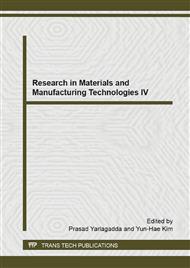p.166
p.170
p.175
p.180
p.184
p.189
p.193
p.201
p.205
Transverse Magnetoelectric Effect in Nickel Zinc Ferrite-Lead Zirconate Titanate Layered Composites
Abstract:
By using a elastic mechanics model the transverse magnetoelectric voltage coefficient of magnetostrictive-piezoelectric bilayer is derived according to the constitutive equations. The transverse magnetoelectric coupling of nickel zinc ferrite-lead zirconate titanate (Ni0.8Zn0.2Fe2O4–Pb (Zr,Ti)O3, NZFO-PZT) layered composites were calculated by using the corresponding material parameters of individual phases. NZFO samples have been synthesized with sol–gel technique. Layered composites NZFO-PZT and NZFO-PZT-NZFO have been fabricated by binding discs of NZFO and commercially available PZT, and the transverse magnetoelectric effect have been investigated. The peak value of transverse magnetoelectric voltage coefficient for NZFO-PZT-NZFO trilayer reaches 252.4 mV/cmOe under a bias magnetic field of about 320 Oe, which is about three times as large as that of NZFO-PZT bilayer. The interface coupling parameter of trilayer is significantly higher than that of bilayer.
Info:
Periodical:
Pages:
184-188
Citation:
Online since:
December 2014
Authors:
Keywords:
Price:
Сopyright:
© 2015 Trans Tech Publications Ltd. All Rights Reserved
Share:
Citation:


